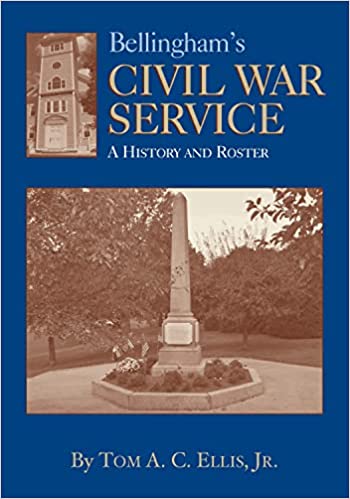In 1860, the rumors of war spread through the community of Bellingham. Her roots were of an agricultural community. She was in the process of developing a strong manufacturing base. She was comprised of 1313 residents. There were only 651 males, including children, elderly and a free black man. Bellingham maintained a small militia. They drilled near the Town Hall.
After the attack of April 12, 1861, on Fort Sumter, the President called for 75,000 militia soldiers to enlist for a three month period. On April 14, 1861, Massachusetts Adjutant General Schouler issued Special Order #14, and the 4th and 6th Mass. Militia were formed. At that time, Bellingham acted swiftly to defend the United States. Alonzo E. and Augustus F. Bent immediately enlisted for three months in the 4th Vol. Inf. Militia Co. “C” (Braintree Light Infantry). At that same time, John Welch and John Williams enlisted in the US Navy. These men enlisted before the Town could legally schedule a meeting.
The United States Army and Navy were in complete disarray. Half of their soldiers and sailors, along with their officers, headed south to join the Confederate States of America. The United States military forces had to be re-organized on the fly and under fire. A volunteer army would have to be created. All municipalities would be given a quota of men to supply for the war effort. Bellingham’s quota of men could not be ascertained, but it is estimated to be around 60 men, based on her population.
Bellingham was accredited with providing 125 men to fight the war. Their average age was just over 25 years of age. Four were killed in battle, five died of wounds and sixteen died of disease. Eighteen were wounded, twenty-two were given disability discharges and eight were taken as prisoners of war.
The women experienced the same outpouring of patriotism. When news arrived about the first battle at Manassas Junction, the women of Bellingham began to pick lint and oilseeds from cotton to make bandages for the wounded. They united with the Boston Sanitary Commission and other organizations that greatly aided the soldiers. They held sewing circles, as they made sox, shirts, undergarments and other clothing items needed in the field. They prepared boxes of jellies and jams from fruit growing all around Bellingham. All of this was done with their increased workloads. The husbands, fathers and sons were not here to do everyday chores.
Bellingham, in spite of her lesser population, made enormous contributions to preserve this nation and end slavery. It is this book’s ambition that it never be forgotten.
